The Cost of a Kitchen Remodel
The cost of a kitchen remodel can vary widely from $9,000 for a simple, minor refresh to over $50,000 for a comprehensive, top-to-bottom renovation. The cost of cabinets is a significant factor, but other factors like electrical and plumbing work, as well as new appliances, can also impact the total cost. On average, a full kitchen remodel costs around $25,000.
The extent of your renovation and your budget will ultimately determine the total cost. To help you get a better idea of what to expect, we have gathered information from our trusted dealers to break down the costs of a kitchen remodel based on the type of renovation, kitchen size, and budget. We've also provided a typical remodeling budget to give you a starting point.
The First Step in Kitchen Renovation: Determine Kitchen Size and Scale of Renovation
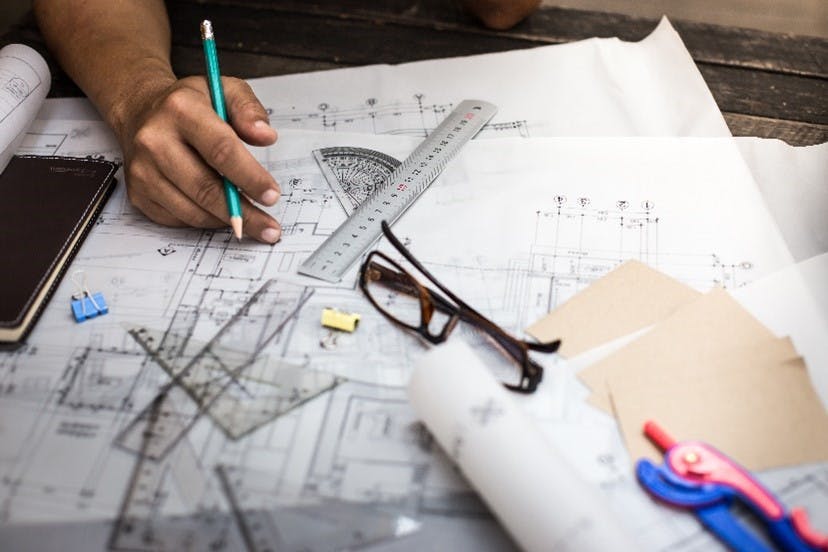
Kitchen size:
Small kitchen ➡ up to 70 sq. ft.
Medium kitchen ➡ 70-175 sq. ft.
Large Kitchen ➡ 175 sq. ft. and up
Scale of your renovation:
Small-scale remodel
The kitchen refresh is focused on improving the aesthetics and functionality without changing the kitchen layout. You can do this by painting, switching out drawer and cabinet pulls and knobs, and adding new light fixtures.
Typical timeline of renovation: 2-4 weeks
Average cost: $10,000 - $20,000
Mid-scale remodel
This renovation includes new appliances, cabinetry, hardware, flooring, countertops, sink, and kitchen painting.
Typical timeline of renovation: 4-6 weeks
Average cost: $20,000 - $70,000
Large-scale remodel
The costliest renovation, this type of remodel changes the kitchen footprint, upgrades appliances, includes luxury finishes, moves plumbing and electrical lines, and includes upgraded light fixtures and undercabinet lighting.
Typical timeline of renovation: 6-8 weeks
Average cost: $70,000+
Average Cost of Kitchen Remodel by US Region

Northwest - $25,600-$61,100
Rocky Mountains - $12,700 - $39,000
Southwest - $12,350 - $33,950
Midwest - $10,500- $34,300
Southeast - $12,000 - $32,200
Mideast - $13,600 - $37,650
Northeast - $15,600 - $40,300
Kitchen Remodel Cost Breakdown
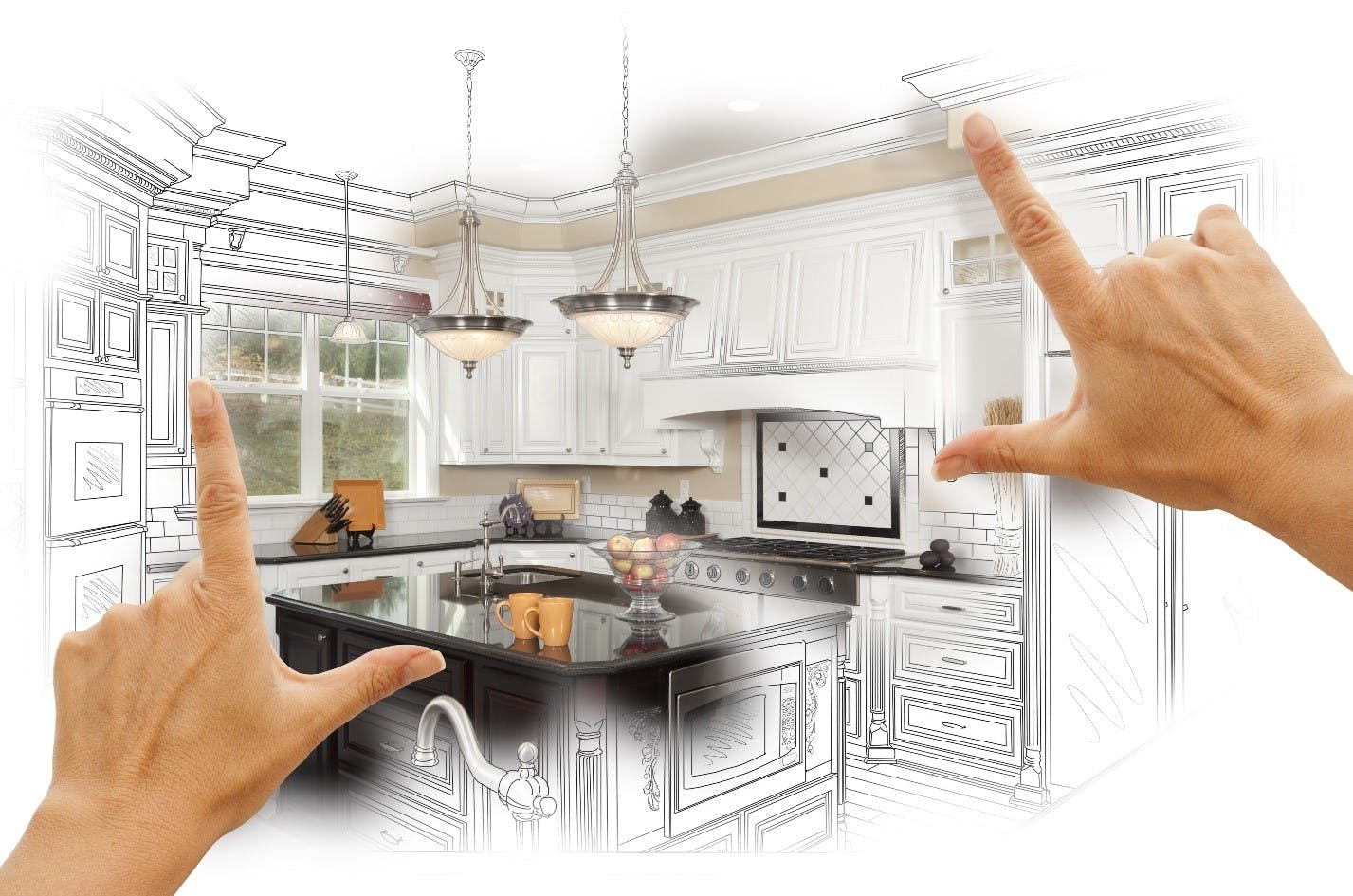
Cabinets
The kitchen cabinets take up a large chunk of the budget at 25%. The cost of the cabinets varies based on what type of cabinets you get: RTA, semi-custom, and custom cabinets.
RTA
Ready-to-assemble cabinets are a cost-effective option for those looking to save money. They come pre-assembled and can be shipped to you already put together. All you need to do is arrange them in your preferred layout.
It's important to note that these cabinets come in standard sizes with very limited customization options available.
Average cost: $50-$100 per linear sq. ft.
Semi-custom
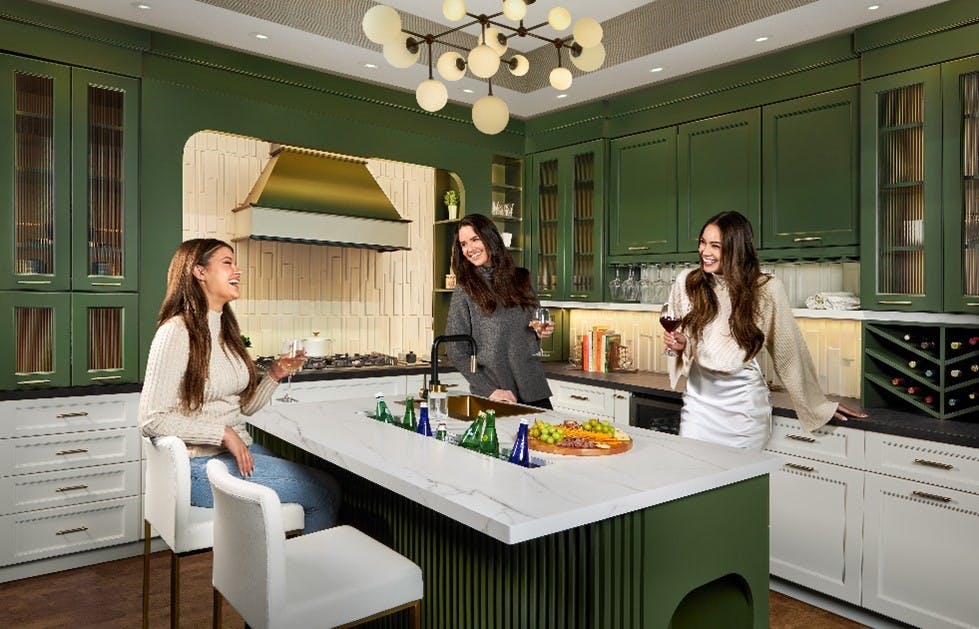
Semi-custom cabinets offer customizations, such as cabinet sizes, colors, and designs. They are made of higher quality materials than RTA, which is reflected in the cost.
Average cost: $300-$500 per linear sq. ft.
Custom
The most personalized cabinet option, custom cabinets allow you to build your cabinets around your unique kitchen space. They are built specifically for your unique layout and precise measurements.
Average cost: $500-$1200 per linear sq. ft.
Countertops
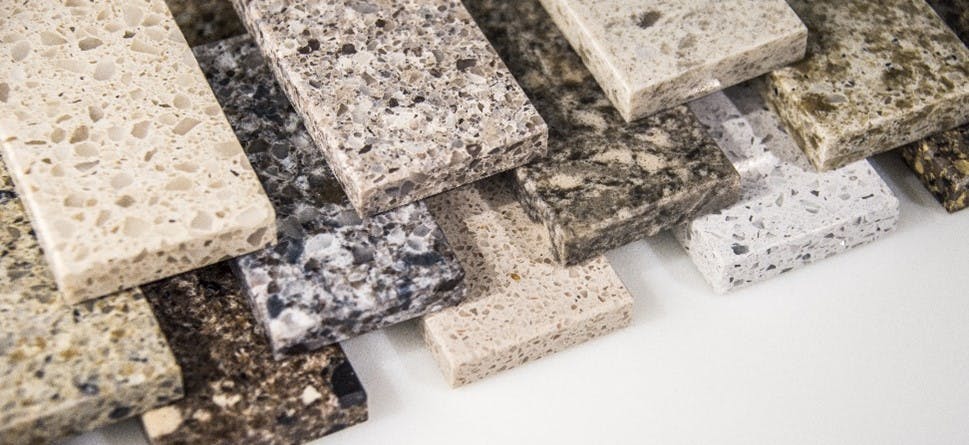
Kitchen countertops are one of the top costs in a kitchen remodel, coming in at about 10% of your budget. The cost will vary depending on the material and how much counter space you need.
Granite countertops ➡ $40 to $60 per sq. ft.
Marble ➡ $40 to $100 per sq. ft.
Live-edge wood ➡ $95 to $500 per sq. ft.
Butcher block ➡ $30 to $40 per sq. ft.
Soapstone ➡ $20 - $70 per sq. ft.
Slate ➡ $30 - $90 per sq. ft.
Limestone ➡ $10 - $70 per sq. ft.
Travertine ➡ $11 - $35 per sq. ft.
Quartz ➡ $15 - $70 per sq. ft.
Corian ➡ $20 - $75 per sq. ft.
Laminate ➡ $8 - $27 per sq. ft.
Stainless Steel ➡ $60 - $100 per sq. ft.
Flooring

Like countertops, the cost of flooring depends on the material. It comes in at around 7% of the overall remodeling budget. Keep in mind installation costs are about $5-$20 per sq. ft.
Glazed ceramic tile ➡ $2 to $4 per square foot
Hardwood ➡ $3 to $10 per square foot
Sheet vinyl floors ➡ $0.50 to $2.00 per square foot
Vinyl plank or tiles ➡ $2.50 to $5.00 per square foot
Bamboo flooring ➡ $1.50 to $9 per square foot
Sheet linoleum floors ➡ $2.00 to $2.50 per square foot
Linoleum tiles ➡ $3.50 to $5.00 per square foot
Appliances
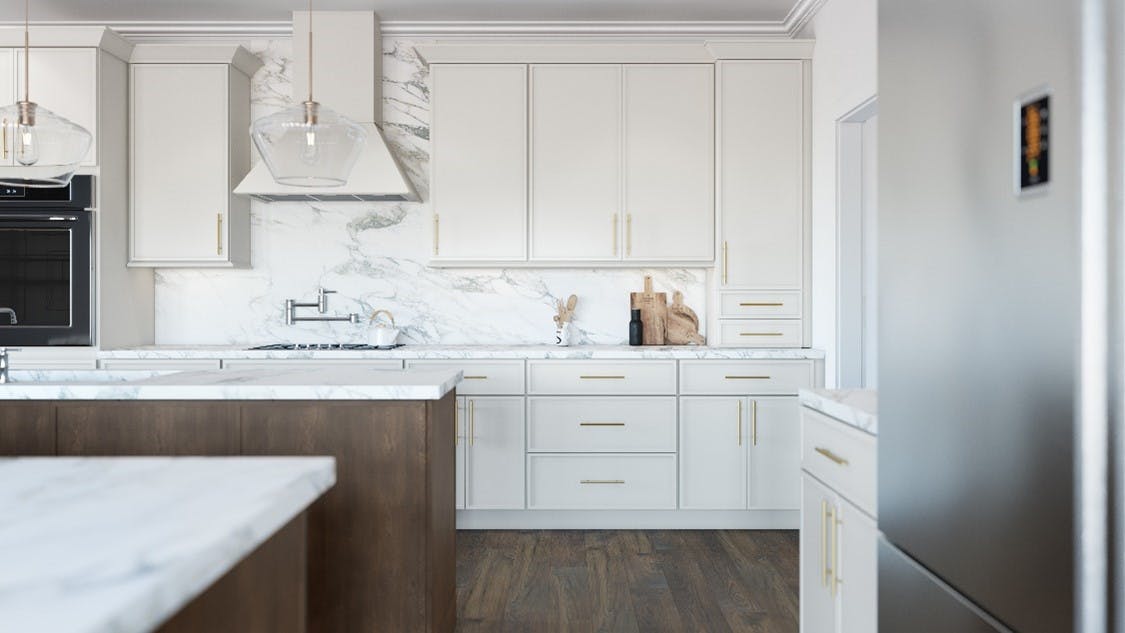
Dishwasher, sink, fridge, ovens, hoods, faucets, etc. break down to about 5% of your overall budget. Appliance prices vary depending on features they include, materials, and brand. This cost can vary from $100 to over $4000, with an added cost for installation. The average cost is around $1500.
Electrical and Lighting
Moving electrical lines is a large cost. The cost of adding outlets, moving wires, and upgrading the entire electrical network depends on the electrician’s per-hour rate, typically $50-$100 per hour.
Adding task lighting, undercabinet lighting, pendant lights, or chandeliers all vary in cost depending on quality and brand. Undercabinet lighting, for instance, comes with a price tag of $200-$300+, and $200-$2000 for other light fixtures.
Backsplash
The backsplash is an important cost to consider since it takes up about 5% of the overall budget. Like the other finishes, the cost depends on the material.
Tile ➡ $25 per sq ft.
Marble ➡ $10 - $95
Brick ➡ $10 - $40
Glass ➡ $30
Stainless Steel ➡ $20
Installation costs ➡ $15 - $40 per sq ft
Plumbing
This includes installing a new sink or faucet, relocating the water pipes if necessary, or installing brand-new plumbing. Plumbing takes up about 2% of the overall budget.
Sink ➡ $200- $2,000
Faucet ➡ $250
New piping ➡ $1,200-$15,000
Installation costs ➡ $40-$200 an hour
Additional Renovation Costs That Affect Your Budget
Design fees ➡ $50-$200 per hour for an interior designer
Contractor fees ➡ 10%-20% of total project cost
Building permits ➡ average of $2500
Appliance moving and storage ➡ average of $200 per month to store your appliances in a storage unit during your renovation
How to Save on a Kitchen Remodel
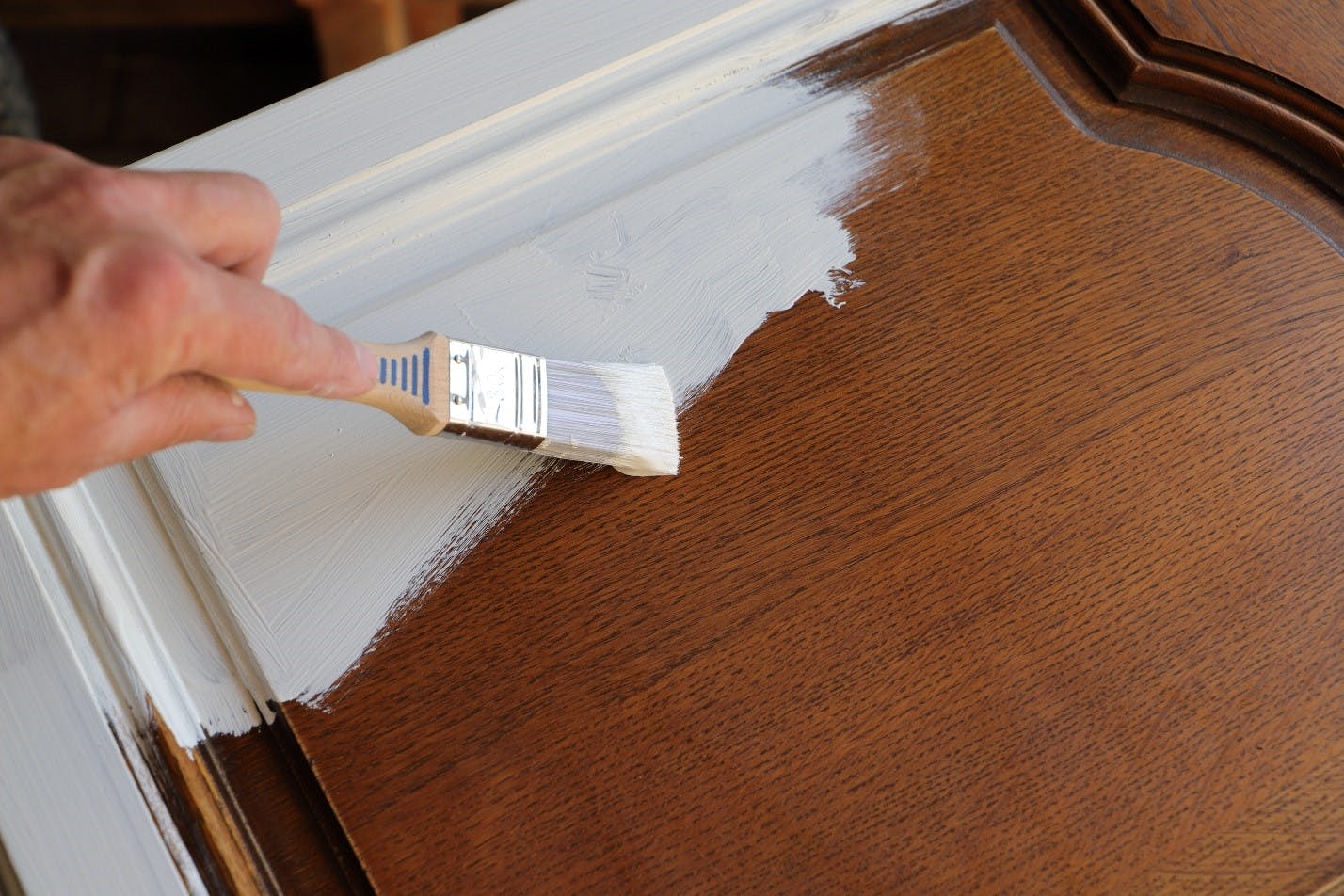
Keep the existing cabinets
If possible, update your existing cabinets instead of removing them. Refinish and repaint them and switch out the knobs for an updated look.
Stick to the budget
It is vital to set a realistic budget, including a contingency fund for unexpected fees. Have an inspection and gather several quotes from contractors before you settle on a budget.
DIY
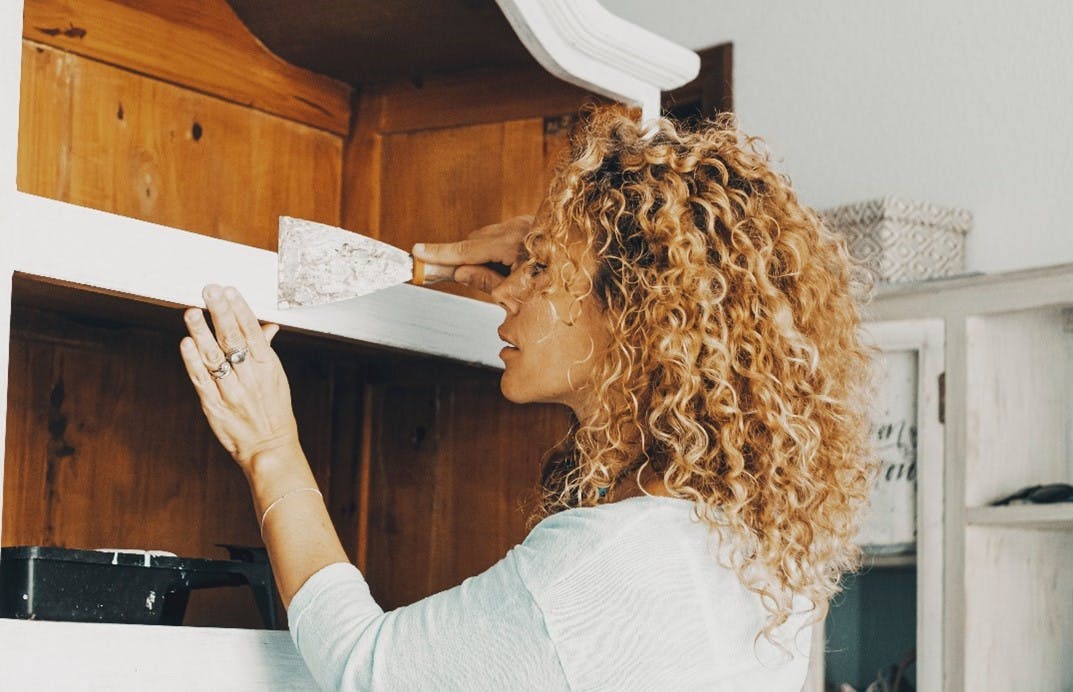
If you feel capable, DIY any kitchen remodeling projects you can. Painting, removing wallpaper, installing a backsplash, and replacing pulls and knobs are great DIY projects if you have the time and the talent. If you feel unsure, it's best to go with a professional.
Shop smart
Go with budget-friendly options as much as possible for appliances and finishes. Try shopping around for deals or finding discounts where you can.
The cost of a kitchen remodel varies significantly based on scale, kitchen size, regional location, and scope of the renovation. Key factors include plumbing, electrical, countertops, cabinets, backsplash, flooring, and appliances.
To manage costs, you can opt for updating your existing cabinets, setting a realistic budget, and shopping smart. Fabuwood’s knowledgeable dealers can help you set a budget for your renovation, so reach out to your local dealer today to get started on your kitchen renovation.
